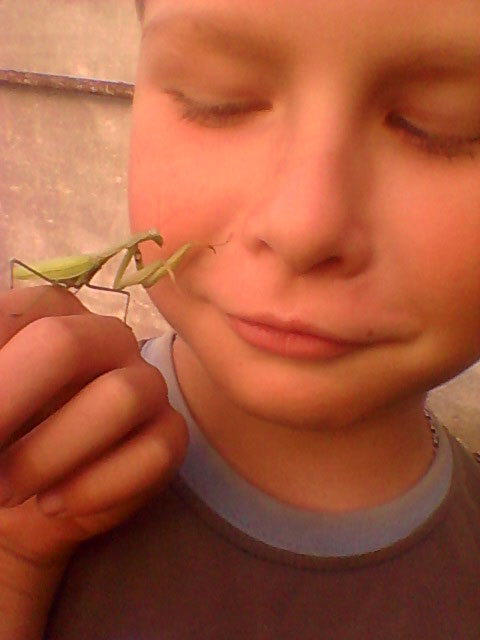The area is 827.1 km2. The population is 10.9 thousand people. (2010). Center - with. Atrium.
The district is located in the west of the Republic of Mordovia. In the eastern part of the forest-steppe complexes of the secondary morainic plains of the marginal part of the Volga Upland are widespread, in the west - landscapes of mixed forests of sandy water-glacial plains of the Oka-Don lowland. In the pine and mixed forests of the region live the moose, wild boar, roe deer, marten, otter, beaver, capercaillie.
Numerous archaeological monuments testify to the antiquity of landscape development, of which 13 are protected by the state, among them are ancient fortifications of the Iron Age "Batyr Pando" in the vicinity of the village of. Kishals and Mordkoslovsky near. Mordovian Kozlovka, parking of the Bronze Age near the village of Barashevo. 38 monuments were registered on the territory of the region: 15 - history, 9 - urban planning and architecture, 1 - art, 13 - archeology.
Deposits of minerals - brick clay (Atyur's) and brick loam (Strelnikovo) - are confined to quaternary deposits. The development of groundwater for centralized water supply began in 1955. The medium and upper Carboniferous aquifers are exploited on the territory of the region. Operating reserves of groundwater - 142 thousand m3 / day. Waters of good quality, their mineralization is low - 0.2 - 0.6 g / dm3. The chemical composition of water is predominantly bicarbonate magnesium-calcium.
The largest rivers of the region are Javas, Lyacha, Shustrui. The catchment area of the river Lyachi in the alignment with. Atrium is 140 km2. The annual flow rate is 0.46 m3 / s, its volume is 14.5 million m3 per year. In the average water year, 91.9% of annual runoff is in spring, 4.0% in winter and 4.1% in summer-autumn.
The share of chernozem (51%) is significant in the structure of the soil cover, gray forest (24), sod-podzolic (14) and floodplain (5%) soils occupy a smaller area. In natural vegetation, broadleaf and mixed forests. Their area is 9,475 hectares. The meadow-steppe complexes were preserved in small areas of the sloping slopes. Under forests, 21.7% are employed, under bushes - 2.8% of the area.
The area is agricultural. The main directions of economic activity - the production of grain, potatoes, milk, meat, wool. Roads with a hard surface are laid to all central estates of agricultural cooperatives and rural administrations. The settlements have been gasified. Industrial enterprises are engaged in the processing of agricultural raw materials.
Atrijevo - Moksha village, located on the river. Lyache, the center of the district of Atyurevsky (since 1937). The population is 4.0 thousand people. (2010). Located on the border of forest-steppe and forest landscapes, on the highways Moscow - Saransk and Torbeevo - Temnikov. The first mention of the settlement dates back to 1443. The name is anthroponym: it is associated with the name of Athere. The church of the Intercession of the Blessed Virgin Mary (1862) was preserved in the village; monuments were erected: to the soldiers who died during the Great Patriotic War of 1941-1945, to VI Lenin.
The village has a compact, mostly one-storey building. In the future, it is possible to develop a settlement to the west at the expense of agricultural lands of medium value. In Atyuriev there is a shop for plastic products "Lisma", two secondary schools work, the House of Creativity of schoolchildren, the Youth Sports School, a music school, a fitness center.
Volno-Nikolsky is a Russian village, located on the rivers Kulikovka and Seleznevka. Single-line linear planning. Population 198 people. (2010). The name of the cult origin: in connection with the construction of the church of St. Nicholas the Sinner. The definition of "free" indicates that the settlement was not proprietary. In the village a church was rebuilt in the name of St. Nicholas, Archbishop Myrlikiy (1904), built in the Neo-Russian style.
The district is located in the west of the Republic of Mordovia. In the eastern part of the forest-steppe complexes of the secondary morainic plains of the marginal part of the Volga Upland are widespread, in the west - landscapes of mixed forests of sandy water-glacial plains of the Oka-Don lowland. In the pine and mixed forests of the region live the moose, wild boar, roe deer, marten, otter, beaver, capercaillie.
Numerous archaeological monuments testify to the antiquity of landscape development, of which 13 are protected by the state, among them are ancient fortifications of the Iron Age "Batyr Pando" in the vicinity of the village of. Kishals and Mordkoslovsky near. Mordovian Kozlovka, parking of the Bronze Age near the village of Barashevo. 38 monuments were registered on the territory of the region: 15 - history, 9 - urban planning and architecture, 1 - art, 13 - archeology.
Deposits of minerals - brick clay (Atyur's) and brick loam (Strelnikovo) - are confined to quaternary deposits. The development of groundwater for centralized water supply began in 1955. The medium and upper Carboniferous aquifers are exploited on the territory of the region. Operating reserves of groundwater - 142 thousand m3 / day. Waters of good quality, their mineralization is low - 0.2 - 0.6 g / dm3. The chemical composition of water is predominantly bicarbonate magnesium-calcium.
The largest rivers of the region are Javas, Lyacha, Shustrui. The catchment area of the river Lyachi in the alignment with. Atrium is 140 km2. The annual flow rate is 0.46 m3 / s, its volume is 14.5 million m3 per year. In the average water year, 91.9% of annual runoff is in spring, 4.0% in winter and 4.1% in summer-autumn.
The share of chernozem (51%) is significant in the structure of the soil cover, gray forest (24), sod-podzolic (14) and floodplain (5%) soils occupy a smaller area. In natural vegetation, broadleaf and mixed forests. Their area is 9,475 hectares. The meadow-steppe complexes were preserved in small areas of the sloping slopes. Under forests, 21.7% are employed, under bushes - 2.8% of the area.
The area is agricultural. The main directions of economic activity - the production of grain, potatoes, milk, meat, wool. Roads with a hard surface are laid to all central estates of agricultural cooperatives and rural administrations. The settlements have been gasified. Industrial enterprises are engaged in the processing of agricultural raw materials.
Atrijevo - Moksha village, located on the river. Lyache, the center of the district of Atyurevsky (since 1937). The population is 4.0 thousand people. (2010). Located on the border of forest-steppe and forest landscapes, on the highways Moscow - Saransk and Torbeevo - Temnikov. The first mention of the settlement dates back to 1443. The name is anthroponym: it is associated with the name of Athere. The church of the Intercession of the Blessed Virgin Mary (1862) was preserved in the village; monuments were erected: to the soldiers who died during the Great Patriotic War of 1941-1945, to VI Lenin.
The village has a compact, mostly one-storey building. In the future, it is possible to develop a settlement to the west at the expense of agricultural lands of medium value. In Atyuriev there is a shop for plastic products "Lisma", two secondary schools work, the House of Creativity of schoolchildren, the Youth Sports School, a music school, a fitness center.
Volno-Nikolsky is a Russian village, located on the rivers Kulikovka and Seleznevka. Single-line linear planning. Population 198 people. (2010). The name of the cult origin: in connection with the construction of the church of St. Nicholas the Sinner. The definition of "free" indicates that the settlement was not proprietary. In the village a church was rebuilt in the name of St. Nicholas, Archbishop Myrlikiy (1904), built in the Neo-Russian style.






.jpg)
.jpg)
.jpg)
.jpg)
.jpg)
.jpg)
.jpg)
